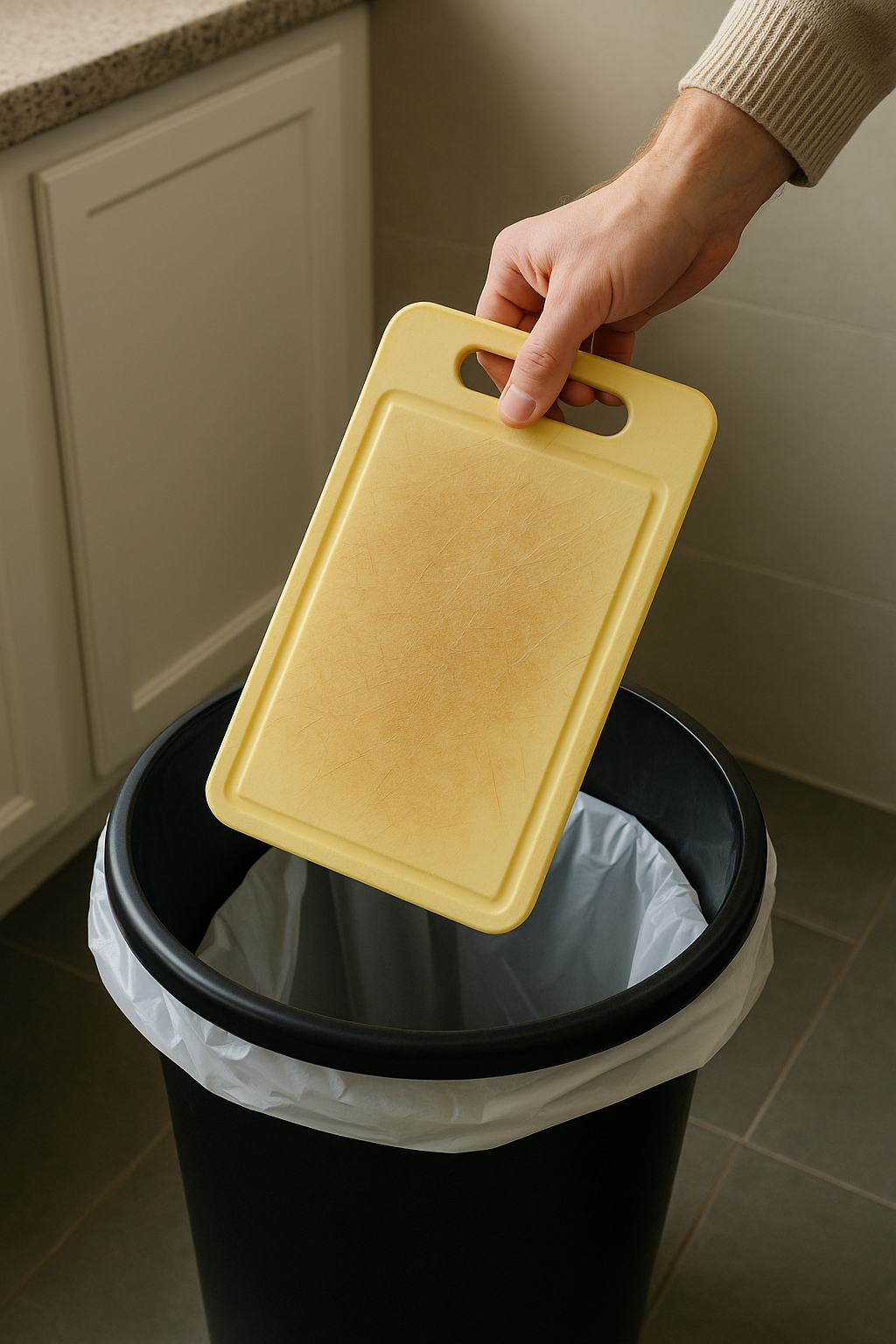
Swap Your Plastic Board for a Carbonised Bamboo One – Here’s Why
We use our chopping board every single day — it’s the unsung hero of the kitchen. But have you ever paused to think about what you’re chopping on? If you’re using a plastic board, it might be time to upgrade. Enter the carbonised bamboo board: a kitchen tool that brings serious benefits over standard plastic — and even a step‑up from regular bamboo. In this post we’ll explore why a carbonised bamboo board is a great investment, how it compares with standard bamboo boards, and why both beat plastic hands‑down.
The Problem with Plastic Chopping Boards
Plastic chopping boards are everywhere for good reason: they’re affordable, lightweight, and many are labelled dishwasher‑safe. But there are some significant drawbacks:
- Over time, knife cuts and grooves accumulate, and these become breeding grounds for bacteria. Research highlights that plastic boards can harbour more bacteria in deep grooves.
- Plastic is made from fossil fuels, and at end‑life often ends up in landfill or worse. Not exactly the most eco‑conscious choice.
- As the board wears, micro‑plastics can shed or food particles can embed in the marks — leading to hygiene and durability issues.
- Aesthetically and tactile‑wise, plastic often lacks the warmth or quality feel of a natural material. Your kitchen prep zone can feel upgraded with a premium board instead.
So if plastic has these downsides, what’s the alternative? That’s where bamboo — and in particular carbonised bamboo — comes in.
Standard Bamboo Boards – A Strong Step Up
Bamboo is technically a grass, not wood, but in chopping board form it presents some compelling advantages:
- It’s fast‑growing, renewable, and much more sustainable than many hardwood tree options.
- Bamboo boards are generally dense, durable and have lower water absorption than some softer wood boards.
- They often feature natural antimicrobial properties, making them a hygienic pick compared to some plastic boards.
That said, standard bamboo boards also have limitations. They can still warp or crack if left soaked, they may dull knives a little more than ultra‑soft woods, and they require proper care (e.g., hand‑wash, oiling).
If you want the benefits of bamboo but with extra performance and aesthetics — that’s where carbonised bamboo enters the frame.
Carbonised Bamboo – The Upgrade Explained
“Carbonised” (or sometimes “thermally treated”) bamboo means the board has undergone a controlled heating process which caramelises the natural sugars in the bamboo and alters its structure slightly. This gives a richer colour and improved performance. According to the manufacturer Deer & Oak, the benefits include improved moisture resistance, enhanced durability and a premium aesthetic.
Key advantages of carbonised bamboo boards include:
- Better stability & moisture resistance — the treatment reduces absorption of water and minimises warping or splitting over time.
- Striking aesthetic — the deep caramel‑brown tone gives a more premium look than plain pale bamboo, so it works well in modern kitchens.
- Sustainability credentials — you still get the renewable, fast‑growing bamboo base, so you’re making a greener choice compared to plastic boards.
- Hygiene and durability combined — fewer deep grooves, less distortion, and a solid surface means easier cleaning and longer lifespan.
If you’re interested, check out this popular option: Deer & Oak 3‑Piece Carbonised Chopping Board Set on Amazon UK, or head to their website at deerandoak.co.uk to explore the range.
Carbonised Bamboo vs Standard Bamboo vs Plastic – A Side‑by‑Side Comparison
| Material | Sustainability & Renewability | Hygiene / Bacteria Resistance | Knife‑friendly / Blade Wear | Moisture & Stain Resistance | Aesthetic & Kitchen Fit | Typical Lifespan / Value |
|---|---|---|---|---|---|---|
| Plastic | Poor — fossil‑based, non‑renewable | Moderate but grooves trap bacteria easily | Not ideal — harder surface and marks accumulate | Poor — scratches, discolouration, micro‑plastics possible | Functional but bland | Short — likely replaced frequently |
| Standard Bamboo | Good — fast‑growing grass, renewable | Better — dense board, some antimicrobial properties | Good — though harder than some woods, may dull knives slightly faster | Better — fairly water‑resistant but still requires care | Warm, attractive natural look | Better value — lasts many years with care |
| Carbonised Bamboo | Very good — same base as bamboo + improved processing | Very good — fewer grooves & improved finish | Very good — solid surface, good balance | Excellent — enhanced stability & moisture resistance | Premium look, fits modern kitchens well | Excellent — strong lifespan, high value |
Real Benefits You’ll Notice in Daily Use
Here are some of the benefits you’ll experience when using a carbonised bamboo board instead of plastic (or even a plain bamboo board):
- Better hygiene: fewer deep grooves means less hidden bacteria and easier cleaning.
- Greater durability: less warping, fewer cracks, so you’ll replace it less often.
- Premium look & feel: the warm tones of carbonised bamboo make it suitable for both cooking and serving (for example as a charcuterie or cheese board).
- Easier on the environment: fewer replacements, less plastic waste, renewable material.
- Cost‑effective long‑term: You might pay a little more up‑front than a basic plastic board, but over time you’ll get better value and fewer replacements.
Care is relatively straightforward: hand wash with mild soap and warm water, dry thoroughly, avoid soaking or dishwasher use, and apply a food‑safe board oil occasionally to keep the surface in top shape.
How to Choose the Right Carbonised Bamboo Chopping Board
When selecting your board, consider these factors:
- Size & shape: Does it fit your prep space? Do you need juice grooves or handles?
- Thickness & grain orientation: Thicker boards are more stable; random or end‑grain can affect durability.
- Finish & food‑safe certification: Ensure the adhesives and finishes are non‑toxic and formaldehyde‑free.
- Non‑slip features: Some boards include rubber feet or a groove to stop sliding on the worktop.
- Supplier credibility: Choose a reputable brand (for example via deerandoak.co.uk) and check reviews.
- Care instructions: Make sure the board comes with guidance on hand‑washing and maintenance so you maximise lifespan.
Final Thoughts & Call to Action
If you’re still using a plastic chopping board, now is a great moment to upgrade. Even switching to a standard bamboo board will be a big improvement. But if you want the best of both worlds — durability, aesthetics, sustainability — then a carbonised bamboo board is a smart choice.
Ready to make the switch? You can explore the carbonised options on Amazon UK: Deer & Oak 3‑Piece Carbonised Chopping Board Set. Alternatively, visit the brand’s direct site at deerandoak.co.uk for their full range.
Make the change today — your knives, kitchen and the planet will thank you.
Frequently Asked Questions (FAQs)
Are carbonised bamboo boards safe for raw meat?
Yes — as long as you treat them properly. Use separate boards (or thoroughly clean between uses) for raw meat, wash with hot soapy water, dry immediately, and oil occasionally. The carbonised bamboo surface is robust and hygienic if maintained correctly.
Will using a harder carbonised bamboo board dull my knives faster?
Possibly marginally, because harder surfaces can place more stress on blades. However, compared to plastic, any premium bamboo board will still perform significantly better overall — and the benefits outweigh the trade‑offs for most home cooks.
Can I put a carbonised bamboo board in the dishwasher?
No. Even with the improved stability of carbonised bamboo, you should hand‑wash the board. Dishwashers expose boards to heat, steam and detergent overload which can damage adhesives or warp the board over time.
How often should I oil my bamboo board?
Typically every few months (or when the surface looks dry or dull). Use a food‑safe
\mineral oil or board‑specific oil, apply a thin layer, let it sit tdeswhen wipe off excess. This helps maintain the finish, prevent cracks, and prolong lifespan.
What’s the difference between carbonised bamboo and regular bamboo?
In essence: carbonised bamboo has undergone a thermal treatment which improves moisture resistance, stability and gives a richer colour. Regular bamboo is still excellent, but may not offer the same level of performance or aesthetics. The core bamboo material is the same renewable base.
